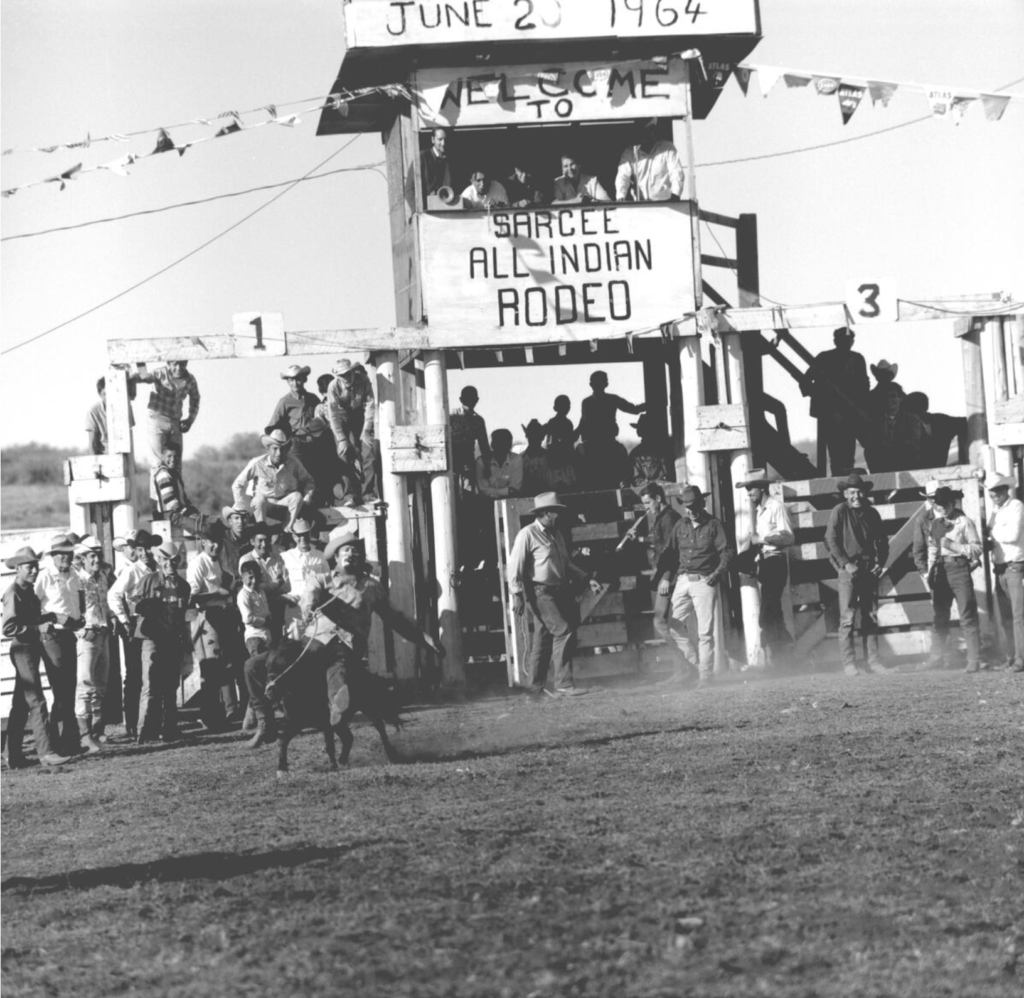Rodeo was central to the development of the art of sports photography. Go online and you’ll find plenty of archives, museums, commercial image databases, and individuals supplying historical photographs of action in the arena. Before the era of digital cameras, it was not easy to capture legible images of running and bucking livestock with cowboys being thrown in the air or straining at the instant before the rope landed. One thing those arena shots often have in common: they expose the arena as a mostly masculine place.
Here, men and boys at the 1964 Sarcee All Indian Rodeo (hosted by the Tsuut’ina Sarcee Nation near Calgary, Alberta) have a good laugh over a comedic ride by a rodeo clown on a miniature pony. The shot is off-kilter, conveying the dynamism and humour of the scene. The photograph gives the impression that women were perhaps not welcome back of the chutes, within the arena, or in the judge’s shack above.
Yet, women have been critical to rodeos, both at the show and in the days and weeks of preparation before. A puzzle for us is how to overcome the fact that rodeo women seldom appear in the photographic record of rodeo day competitions representing the culmination of all the hard work before rodeo day. Our project will ask rodeo women about the stereotype of the male arena space: When and why was it so and how did they think about the invisibility of their efforts as a result?
pictured: “Pony Riding at the Sarcee All Indian Rodeo, Sarcee Reserve, Southern Alberta,” September 1964. Calgary Herald fonds, Glenbow Library and Archives at the University of Calgary.
